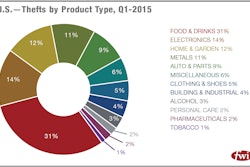The Department of Transportation (DOT) is being urged to release new Federal Motor Carrier Safety Administration (FMCSA) data that allegedly points to the safety of six-axle trucks and supports claims by those looking for weight limit reform.
The Coalition for Transportation Productivity, a group of 200 shippers pushing for an increase to the federal vehicle weight limit on interstate highways, said last week it applauds Congressman Reid Ribble’s (R-Wisc.) recent letter to the DOT urging them to release the data.
FMCSA’s stopping distance data, which has been circulated among transportation circles but not formally released, is part of the DOT’s ongoing Comprehensive Truck Size and Weight Limits Study, meant to guide Congressional decisions related to truck weight reform and other efficiency proposals.
The technical findings of the study were scheduled to be released in November 2014, followed by the final results this spring, but nothing has been made public or submitted to Congress.
In Ribble’s letter, he says one FMCSA representative has publicly discussed the study results, which found that a six-axle truck loaded to 97,000 pounds has the same stopping distance as a five-axle truck loaded to 80,000 pounds.
“To my knowledge, at least one FMCSA representative has publicly discussed the results of the agency’s safety analysis, noting that the stopping distance between a five-axle truck loaded to the current federal gross vehicle weight limit of 80,000 pounds is identical to the stopping distance of a six-axle truck loaded to 97,000 pounds,” Ribble said in his letter to U.S. DOT Secretary Anthony Foxx.
“These FMCSA results will inform our decision-making as the House Transportation and Infrastructure Committee begins work on the highway bill. With the initial deadlines for the results already behind us, it is imperative that DOT release any completed results, including these findings, in real time.”









